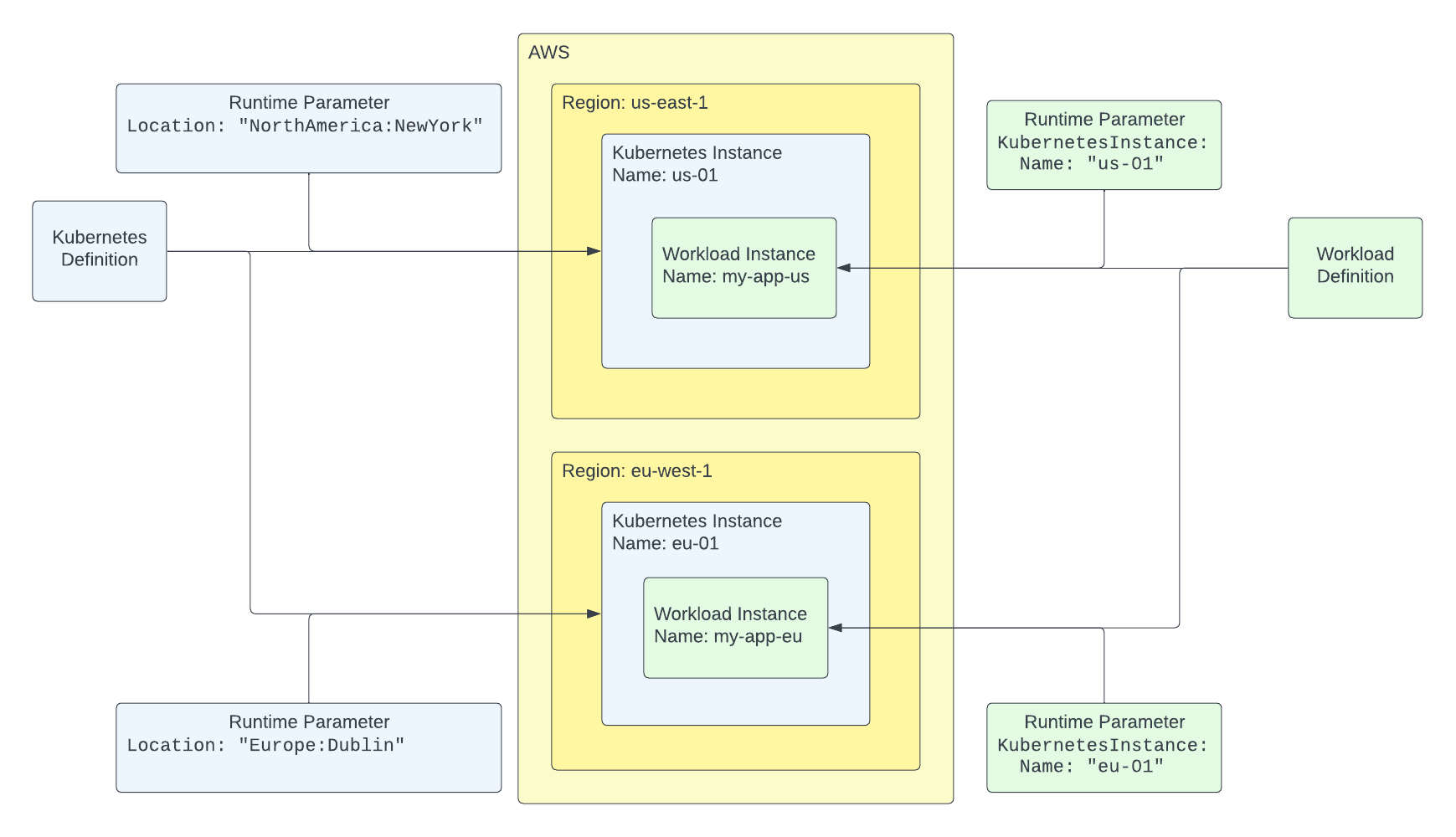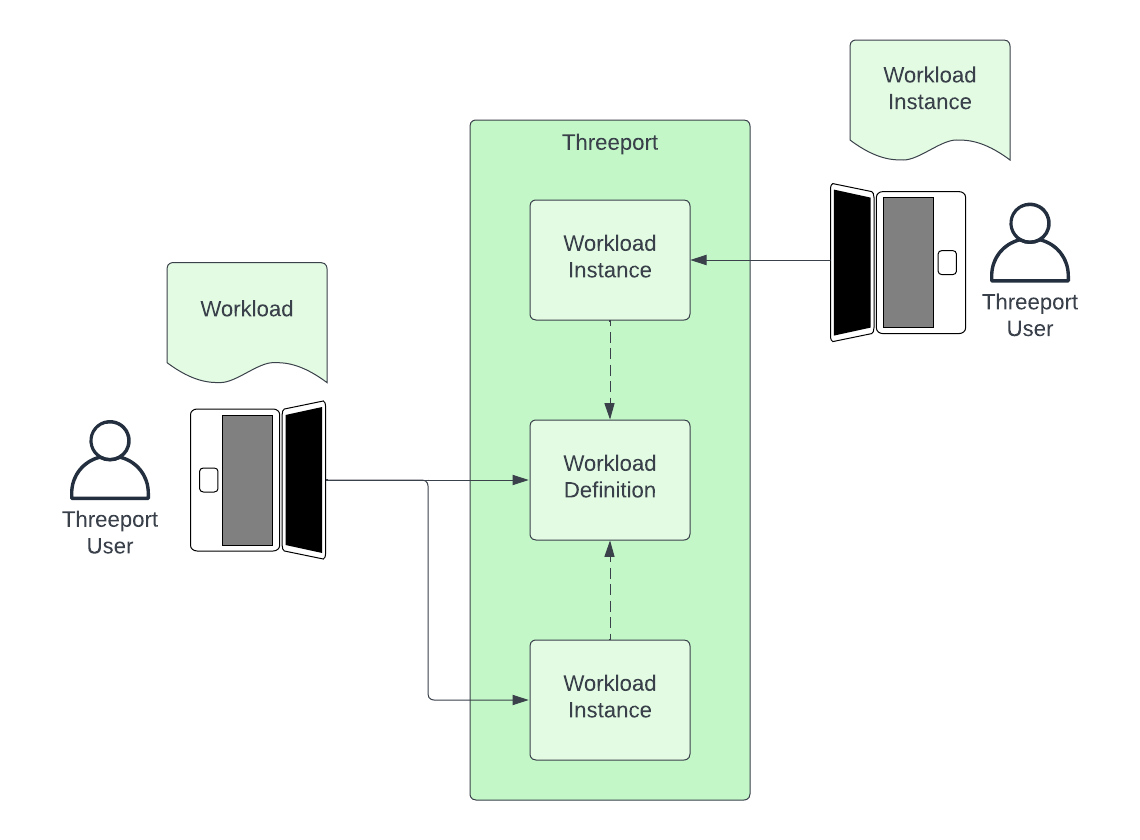Definitions & Instances¶
Most objects in Threeport are broken into two parts:
- Definition: This holds the configuration of attributes for an object.
- Instance: A deployed instance of the configuration with a limited number of runtime parameters.
You can deploy any number of instances for a definition. This diagram provides two examples:

A Kubernetes Definition provides the configuration for a Kubernetes cluster. This includes attributes such as the cloud provider to run on, the node sizes and types to use as well as the maximum number of nodes allowed for the cluster.
Using Instances, the user can then provision as many clusters with this configuration as they need. Each time a Kubernetes Instance is provisioned, the configuration in the definition is referenced as well a runtime parameter that specifies which location the Kubernetes cluster should run in.
Note: In Threeport, the "Location" is an abstraction of the regions for the different cloud providers. This allows users to use Locations that can be translated to different cloud providers and, thus, enable smoother multi-cloud provider environments.
A Workload Definition provides the configuration for a containerized workload. It includes the Kubernetes resource manifests for that workload.
Subsequently, a user can deploy any number of instances that use the resource manifests defined in the Definition. Each time a Workload Instance is deployed, the configuration in the definition is referenced as well as a runtime parameter that determines which Kubernetes cluster the workload should run on.
Defined Instance Abstractions¶
In Threeport, to streamline the process of deploying a cluster, workload or any
other object, we provide a defined instance configuration option that allows the
user to provide the definition and instance in a single config to Threeport.
The Threeport CLI, tptctl, then breaks that into its component parts and
creates them in Threeport.
As a result, the user can then deploy a second instance of the object

Division of Responsibility¶
These constructs allow team leads and domain experts to define the attributes for different objects. Then, individual contributors can rapidly provision instances leveraging those detailed configs made available to them in Threeport.
For example, the available definitions for AWS RDS database instances can be provided by a database expert for different tiers of usage, i.e. definitions for development, staging and production. Then, when developers who use RDS as a part of their app stack need to deploy an application instance, they can reference the definition provided for them, rather than determining the config details themselves.
In another example, the platform team may take responsibility for defining the Kubernetes cluster attributes that teams may use. Then when teams need a temporary development or testing cluster, they can rapidly provision them by referencing a provided definition when they create an instance.
Comparison to Other Systems¶
It is common for other systems to couple the configuration to the instantiation of a distinct object that is created and managed. This often leads to templating mechanisms to deploy similar instances of objects with slight variances.
In Threeport we decoupled these elements so that, once the config details are established, any number of instances can be derived from it. This allows for improved division of responsibility, as discussed above, and avoids the use of complex templating to define different instances.
Next Steps¶
To get a practical understanding of how Threeport manages delivery, check out our Getting Started page which provides the steps to install Threeport and use it to deploy a sample application.
Also, the Namespace Management guide provides instructions for creating workload definitions and deriving multiple instances from that definition. It includes important namespacing considerations for workloads in this context.